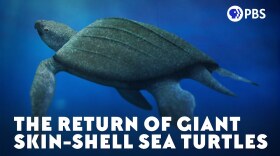-
Elongated tubes, flat ribbons, and other “worm-like” body plans were so varied and abundant that a part of the Ediacaran is sometimes known as Wormworld. But in the end, the ancient Wormworld was ended by the actions of its very own worms.
-
It's possible Euchambersia possessed venom about 20 million years before the first lizards and over 150 million years before the first snakes evolved. We’ve teamed up Sarah Suta from Bizarre Beasts to explore the story of venomous mammals, both living and extinct.
-
Our DNA holds evidence of a huge, ancient pandemic, one that touched many different species, spanned the globe, and lasted for more than 15 million years.
-
This ancient species had the same six legs and segmented body that we’d recognize from an ant today. But it also had a huge, scythe-like jaw and a horn coming out of its head. This bizarre predator belonged to a group known as “hell ants.” But they’re gone now, and we’re still trying to figure out why.
-
It’s important to us that you understand how big this beaver was. Just like modern beavers, it was semiaquatic -- it lived both on the land and in the water. The difference is that today’s beavers do a pretty special thing - one that the giant beaver probably didn’t, or couldn’t, do.
-
Figuring out what this creature’s face actually looked like would take paleontologists years. But understanding this weird animal can help us shine a light on at least one way for ecosystems to bounce back from even the worst mass extinction.
-
For decades, scientists have been studying the cause of the Younger Dryas, and trying to figure out if something like it could happen again. And it turns out that what caused this event is the subject of a heated debate.
-
Lizards are incredibly widespread and diverse but it took them a long time to get to where they are now because they used to face some pretty stiff competition from a group of lizard look-alikes.
-
We’re the only primate without a coat of thick fur. It turns out that this small change in our appearance has had huge consequences for our ability to regulate our body temperature, and ultimately, it helped shape the evolution of our entire lineage.
-
It arose from rhino ancestors that were a lot smaller, but Paraceratherium would take a different evolutionary path.
-
At more than 2 meters long, Aegirocassis was not only the biggest radiodont ever, but it also may have been the biggest animal in the Early Ordovician.
-
For some reason, animals keep evolving into things that look like crabs, independently, over and over again.

















